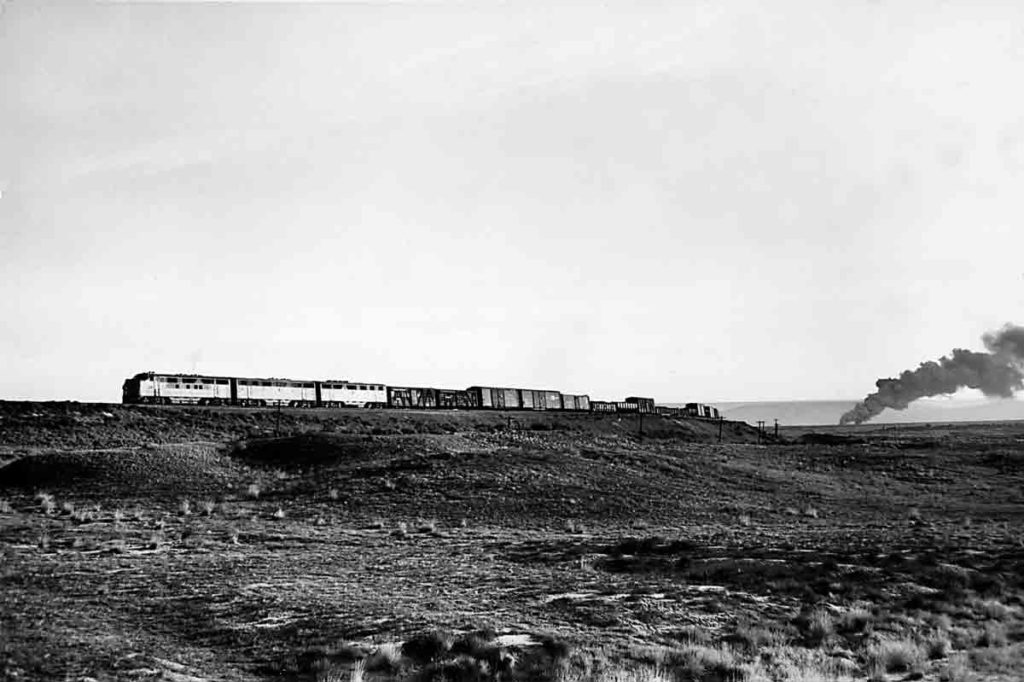
In the early 1950s, Union Pacific F3 units in A-B-B formation lead freight train 257 west up the nearly 2 percent grade to Reverse, Idaho, on the road’s main line to Portland, Ore.; 107 cars to the rear, two 2-8-8-0s assist the diesels. Henry R. Griffiths Jr. photo […]
Read More…
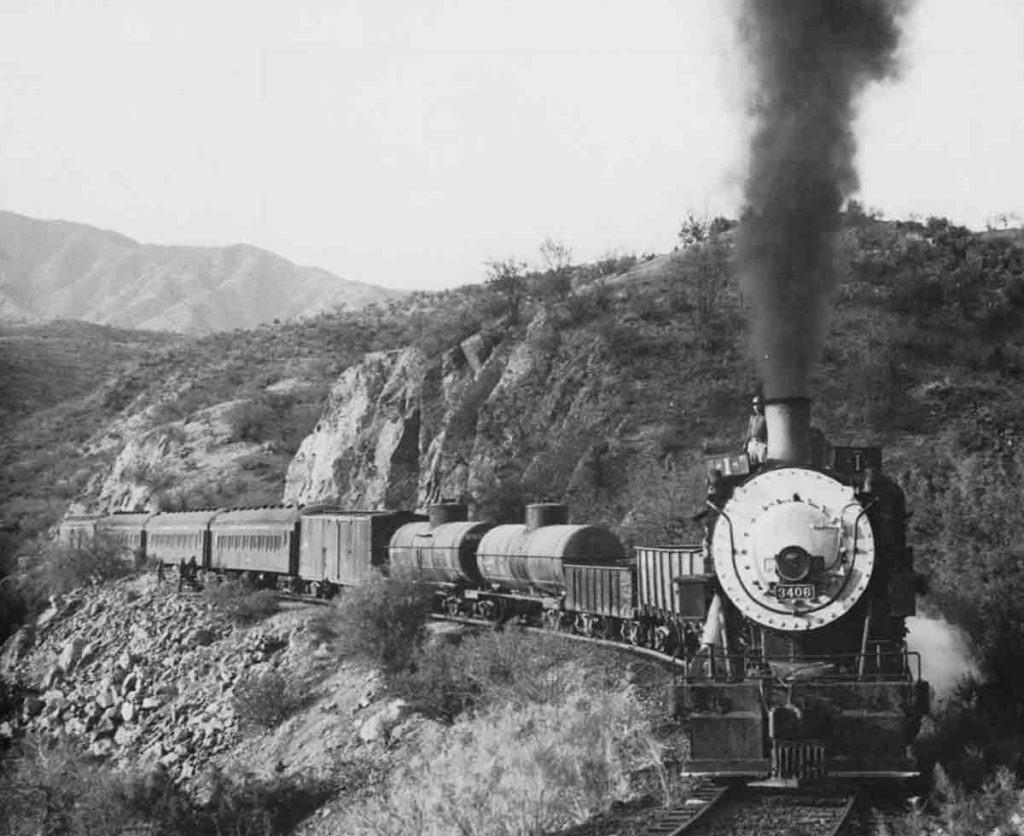
Southern Pacific 2-8-0 3406 works mixed train No. 1 on the Nacozari Railroad between Douglas, Ariz., and Nacozari, Mexico, in spring 1958. Steam lasted on the SP subsidiary until January 1959, two years after diesels took over the rest of the SP system. Donald Duke photo […]
Read More…
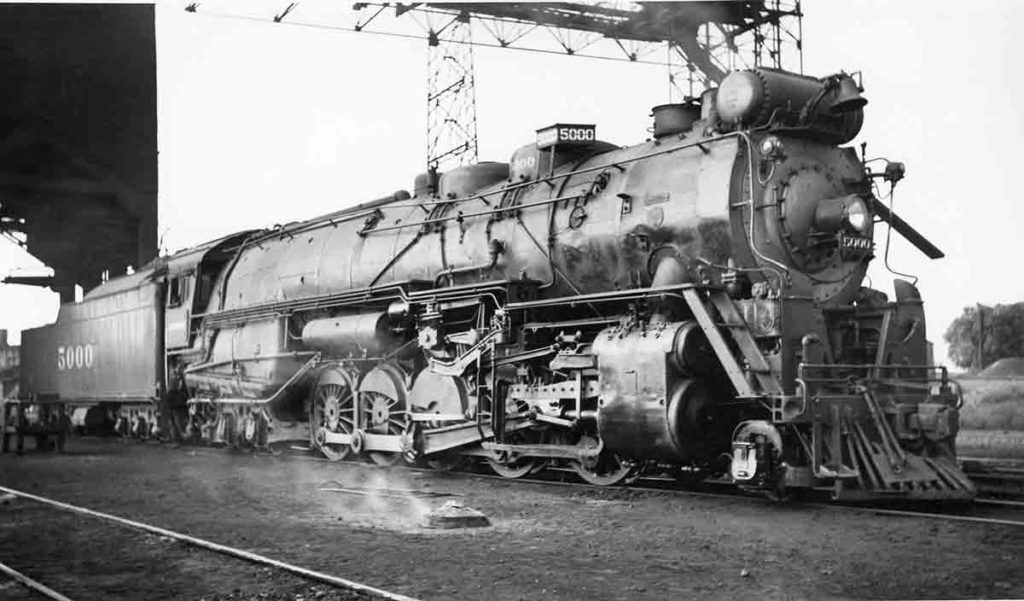
Santa Fe 5000, built by Baldwin in 1930, was the road’s first 2-10-4 designed as such. (One member of the road’s 3800 class of 2-10-2s was built in 1919 with a four-wheel trailing truck.) Nicknamed “Madam Queen” after a comic strip character, No. 5000 laid the groundwork for the greatly enhanced 5001 class of 1938. […]
Read More…

With seemingly every one of its hood doors open, Washington Terminal RS1 No. 54 stands inside the roundhouse in the city’s Ivy City section one night in June 1960. Jim Shaughnessy photo […]
Read More…
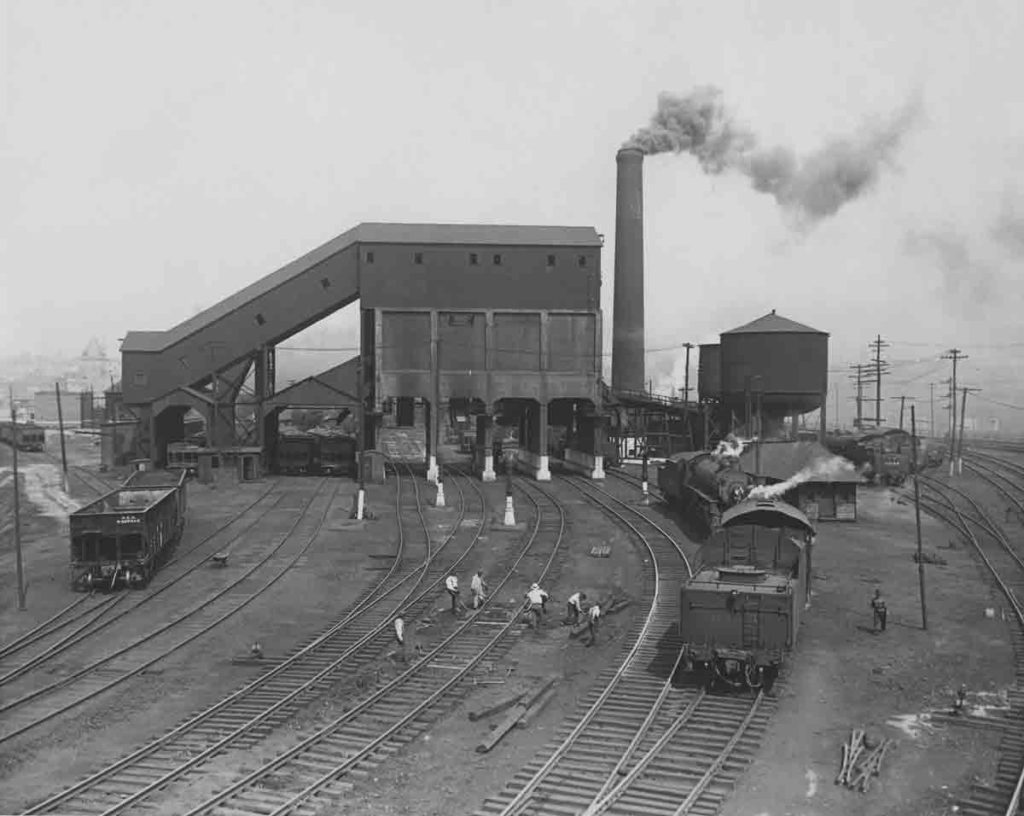
A small track gang replaces ties on one of the tracks served by the coal wharf at New York Central’s engine terminal at Rensselaer, N.Y., across the Hudson River from Albany, sometime in the 1930s. NYC photo […]
Read More…
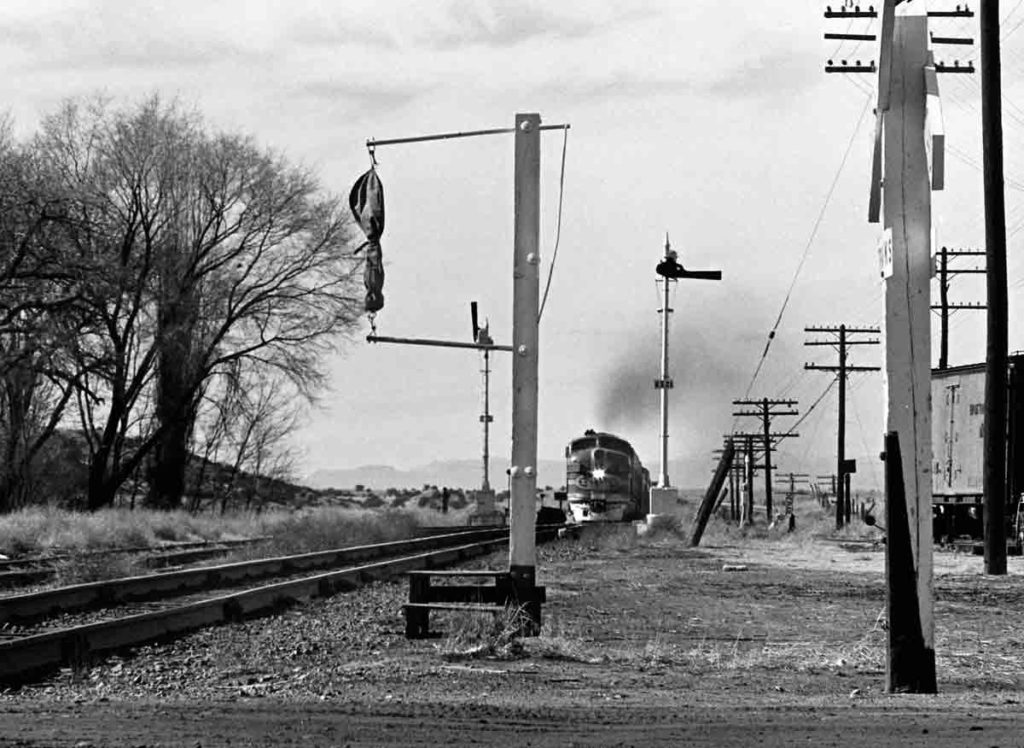
The combined eastbound Super Chief/El Capitan approaches the mail crane at Los Cerrillos, N.Mex., on the Santa Fe in January 1962. In the train’s Railway Post Office car, a clerk is ready to snag the pouch. Clinton W. Morgan Jr. photo […]
Read More…
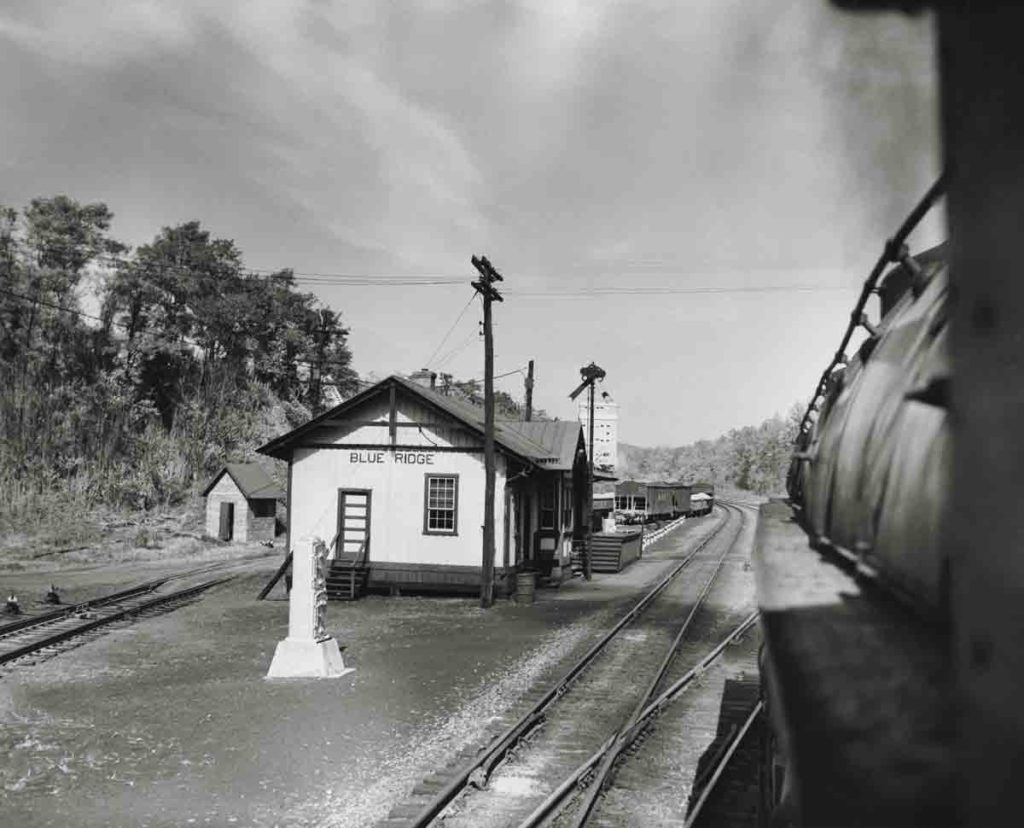
This view from the fireman’s seat on a Norfolk & Western 2-6-6-4 shows the station and yard tracks at Blue Ridge, Va., near the crest of the grade for eastbound trains out of Roanoke, 11 miles behind the train. W. A. Akin Jr. photo […]
Read More…
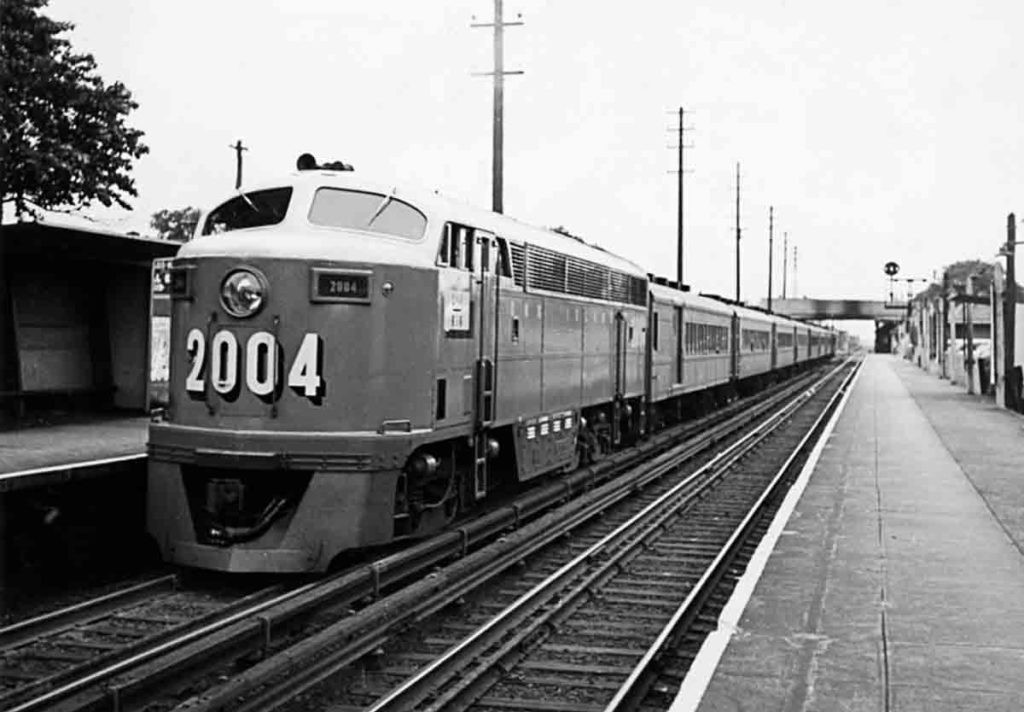
Long Island Rail Road train 233, behind a gray Fairbanks-Morse CPA20-5, pauses at Mineola station on its westbound run from Oyster Bay to Jamaica and Queens in 1950. John Flood photo […]
Read More…
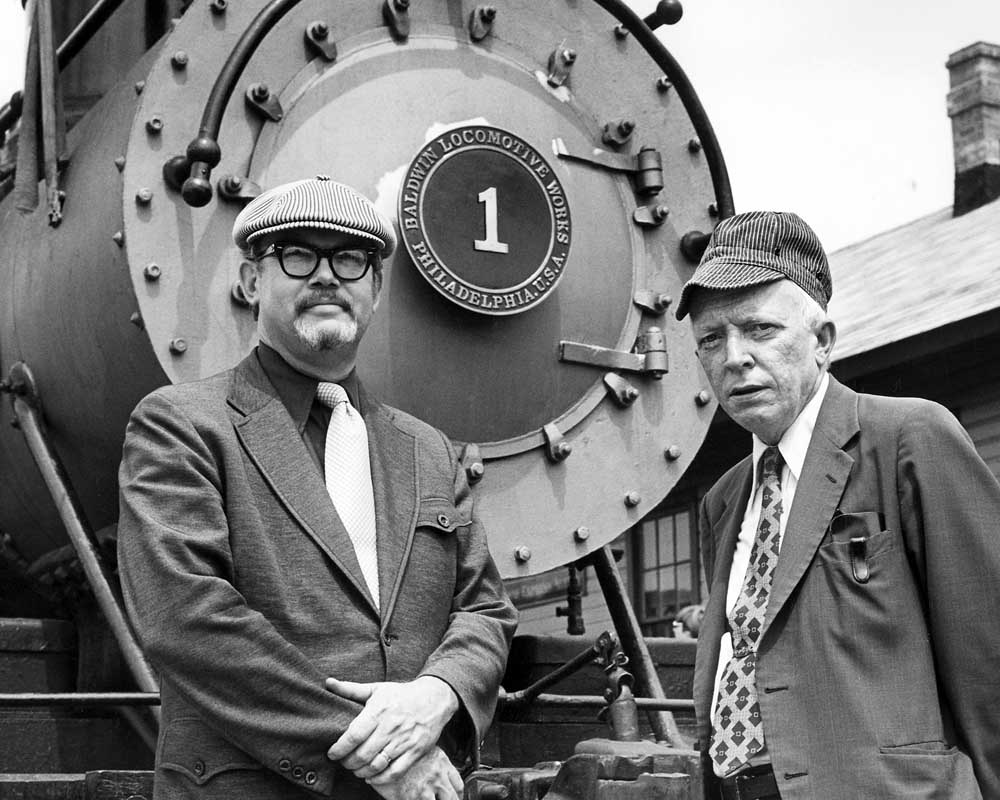
Any time the UPS truck drops a new railroad book on my porch, it’s a good day. But “good” is hardly adequate to describe the feeling I had a few days ago when a box from Indiana University Press showed up by the front door. Only superlatives will do when the subject is photographer […]
Read More…
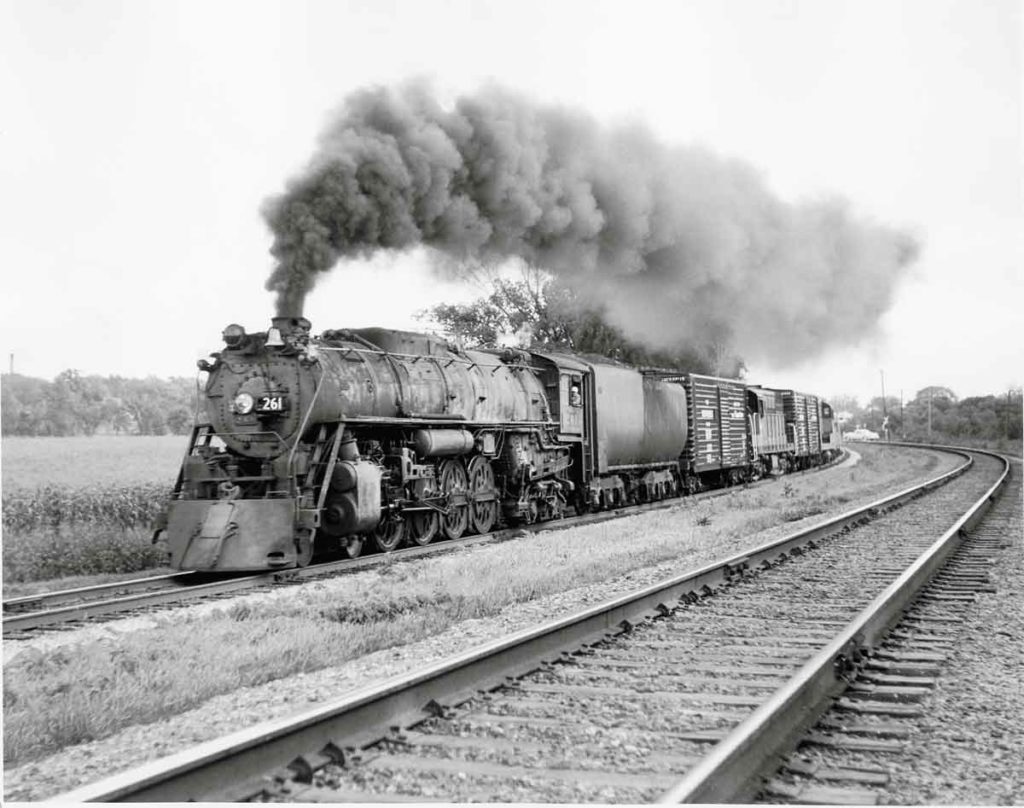
With a consist of just two freshly painted boxcars, two dead Fairbanks-Morse diesels, and a bay window caboose, Milwaukee Road 4-8-4 No. 261 is westbound at Elm Grove, Wis., in September 1954. The dirty, underutilized S3 looks like she’s at the end of her rope, but remarkably she began a second career in 1993 as […]
Read More…
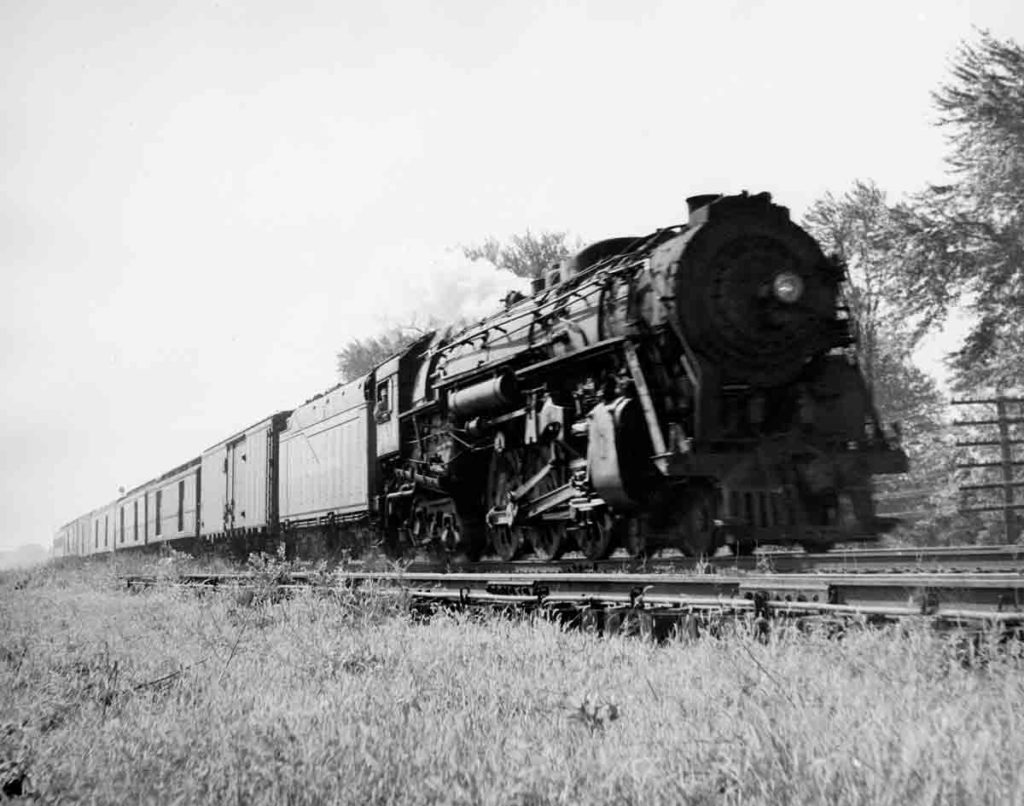
New York Central J-3 Hudson 5437 rushes west with mail train 257 at Millbury Junction, 7.5 miles east of Toledo on the Water Level Route, in September 1955. Philip R. Hastings photo […]
Read More…
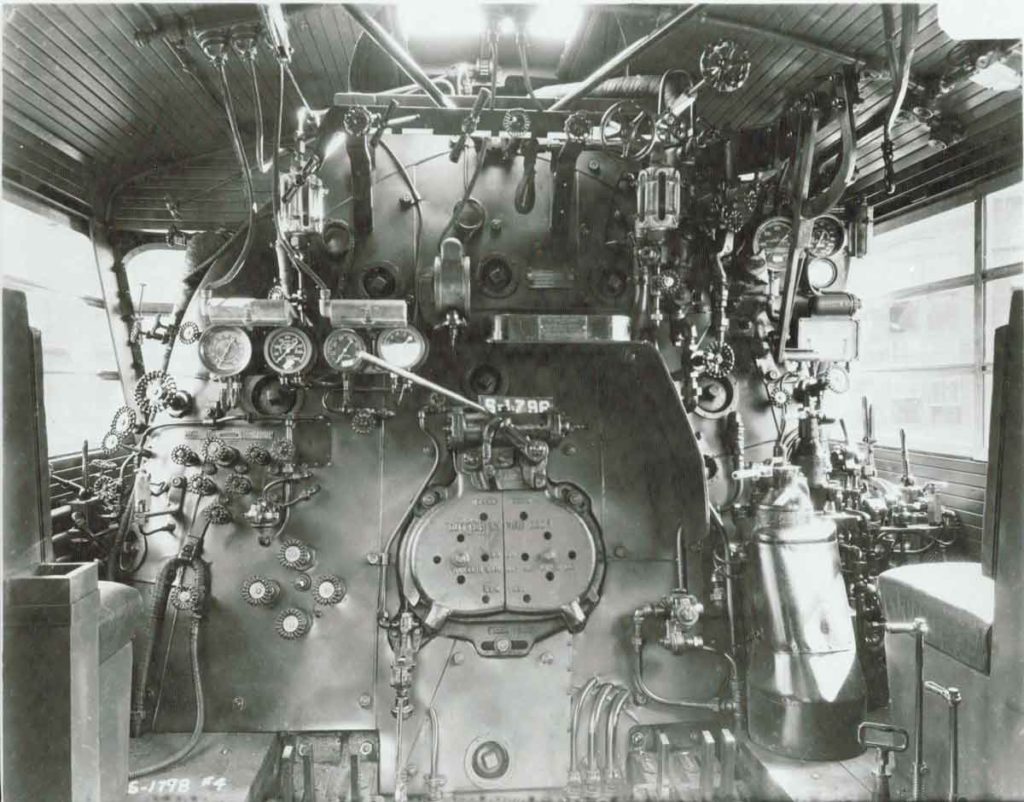
Ready for service at the head of the Milwaukee Road’s 100-mph Hiawatha trains, a brand-new F7 streamlined 4-6-4 shows off its cab interior. Classic Trains coll. […]
Read More…












